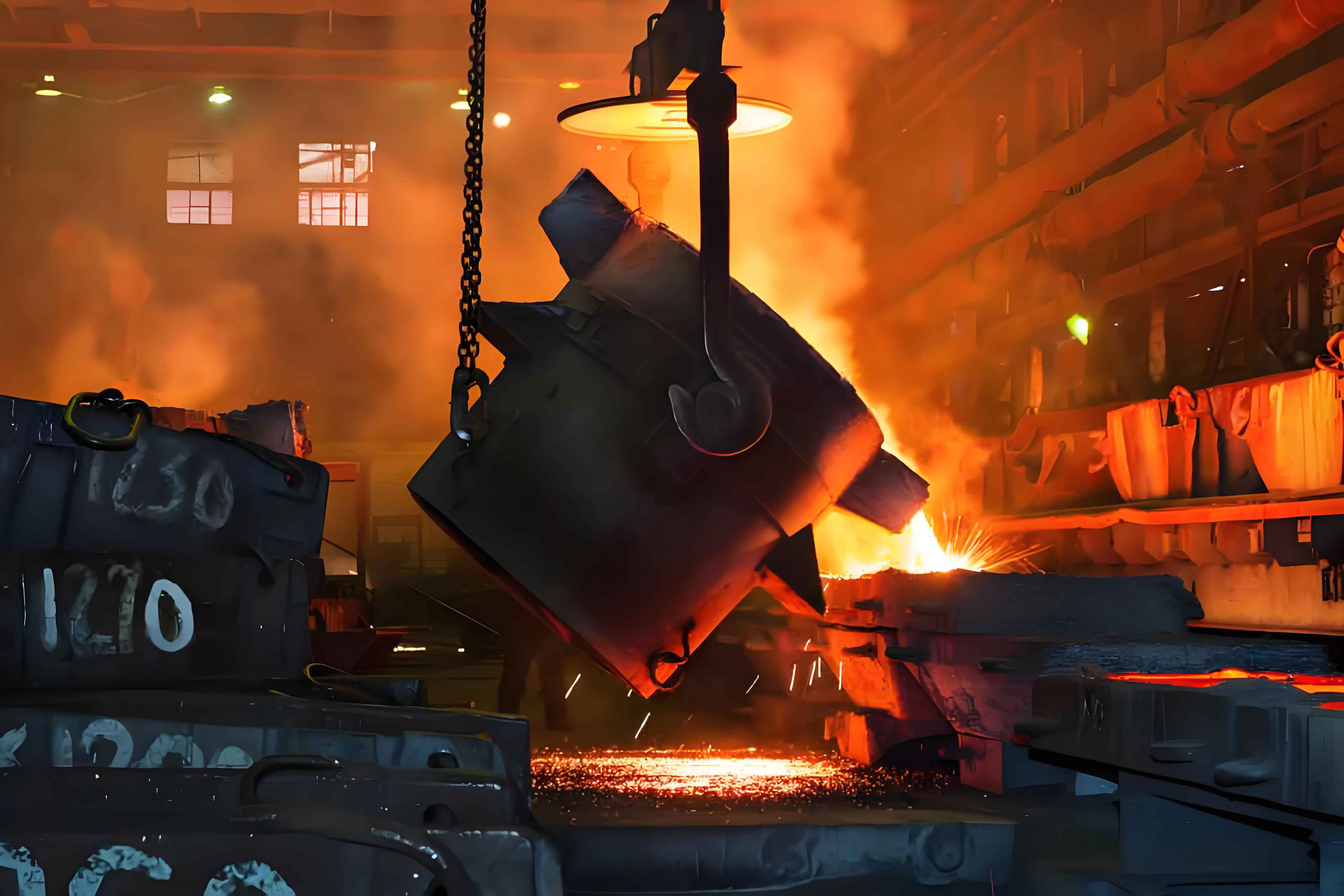Grey cast iron is a widely utilized material in heavy machinery due to its excellent castability, machinability, and damping properties. However, the performance of grey cast iron components in such demanding applications requires thorough evaluation. This article explores the performance characteristics of grey cast iron components, focusing on wear resistance, mechanical strength, and durability. By understanding these factors, we can optimize the use of grey cast iron in heavy machinery to enhance efficiency and longevity.

Introduction
Heavy machinery components are subjected to significant mechanical stresses, wear, and environmental conditions. Grey cast iron, known for its graphite flake structure, provides several advantages, including excellent machinability and good vibration damping. However, the material’s brittleness can pose challenges. This performance evaluation aims to identify key properties and optimization strategies for grey cast iron in heavy machinery applications.
Key Performance Characteristics
- Wear Resistance
- Mechanical Strength
- Durability and Fatigue Resistance
- Thermal Stability
Wear Resistance
Wear resistance is a critical factor for components in heavy machinery, which are often exposed to abrasive conditions. Grey cast iron’s wear resistance can be influenced by its microstructure and the presence of alloying elements.
Factors Influencing Wear Resistance:
- Graphite Flake Distribution: The size and distribution of graphite flakes impact wear resistance. Finer, evenly distributed flakes can improve wear resistance.
- Matrix Structure: The presence of a pearlitic or bainitic matrix enhances wear resistance compared to a ferritic matrix.
- Alloying Elements: Elements such as chromium and nickel can significantly enhance wear resistance by forming hard carbides and refining the matrix.
Mechanical Strength
Mechanical strength is essential for the structural integrity of heavy machinery components. Grey cast iron’s strength is determined by its microstructure and alloying content.
Factors Influencing Mechanical Strength:
- Graphite Flakes: Graphite flakes act as stress concentrators but also improve machinability. Balancing flake size and shape is crucial.
- Matrix Composition: A pearlitic matrix offers higher strength than a ferritic matrix. Alloying elements such as copper and tin can increase strength.
- Heat Treatment: Processes like annealing and quenching can modify the microstructure, enhancing mechanical strength.
Durability and Fatigue Resistance
Durability and fatigue resistance are vital for components subjected to cyclic loading. Grey cast iron’s performance in these areas is influenced by its ability to absorb and dissipate energy.
Factors Influencing Durability and Fatigue Resistance:
- Microstructure: A finer microstructure with well-distributed graphite flakes enhances fatigue resistance.
- Alloying Elements: Nickel and molybdenum improve durability and fatigue resistance by refining the microstructure and enhancing ductility.
- Surface Treatments: Processes such as shot peening and coating can enhance surface durability and fatigue resistance.
Thermal Stability
Thermal stability is crucial for components exposed to high temperatures. Grey cast iron’s thermal conductivity and expansion properties affect its performance in such environments.
Factors Influencing Thermal Stability:
- Graphite Content: Higher graphite content improves thermal conductivity but can reduce strength.
- Alloying Elements: Silicon and molybdenum enhance thermal stability by improving oxidation resistance and reducing thermal expansion.
- Heat Treatment: Stabilizing heat treatments can improve thermal performance by refining the microstructure.
Comparative Table of Performance Characteristics
| Performance Characteristic | Influencing Factors | Optimization Strategies |
|---|---|---|
| Wear Resistance | Graphite flake distribution, matrix structure, alloying elements (Cr, Ni) | Refine graphite flakes, add Cr and Ni |
| Mechanical Strength | Graphite flakes, matrix composition, heat treatment | Optimize flake size, pearlitic matrix, alloying (Cu, Sn) |
| Durability and Fatigue Resistance | Microstructure, alloying elements (Ni, Mo), surface treatments | Refine microstructure, add Ni and Mo, surface treatments (shot peening) |
| Thermal Stability | Graphite content, alloying elements (Si, Mo), heat treatment | Optimize graphite content, add Si and Mo, stabilize with heat treatment |
Practical Implications and Applications
- Engine Blocks and Cylinder Heads:
- Performance Needs: High wear resistance, thermal stability, and mechanical strength are essential.
- Optimization: Using a pearlitic matrix with alloying elements like nickel and chromium can enhance performance.
- Gears and Transmission Components:
- Performance Needs: High mechanical strength, wear resistance, and fatigue resistance are crucial.
- Optimization: Alloying with copper and tin, along with heat treatment, can improve strength and durability.
- Brake Discs and Drums:
- Performance Needs: High wear resistance and thermal stability are necessary to withstand friction and heat.
- Optimization: Enhancing the microstructure with silicon and molybdenum can improve performance.
- Hydraulic Components:
- Performance Needs: Durability and fatigue resistance are essential for reliable operation.
- Optimization: Alloying with nickel and molybdenum, combined with surface treatments, can enhance performance.
Future Trends and Research
- Advanced Alloy Development:
- Research into new alloy compositions aims to further enhance the mechanical properties of grey cast iron. Innovations in nanostructured alloys could lead to significant improvements in strength and toughness.
- Additive Manufacturing:
- The development of additive manufacturing techniques for grey cast iron allows for the creation of complex geometries and optimized microstructures. This technology can enhance the performance of components by precisely controlling the distribution and orientation of graphite flakes and alloying elements.
- Sustainable Manufacturing Practices:
- Using recycled materials and eco-friendly alloying elements can reduce the environmental impact of grey cast iron production while maintaining or improving its mechanical properties. Ongoing research into sustainable practices aims to balance performance and environmental considerations.
Conclusion
The performance of grey cast iron components in heavy machinery is influenced by various factors, including microstructure, alloying elements, and heat treatment processes. By optimizing these factors, manufacturers can enhance the wear resistance, mechanical strength, durability, and thermal stability of grey cast iron components. Ongoing research and technological advancements will continue to provide new solutions and improve the performance of grey cast iron in heavy machinery applications.
